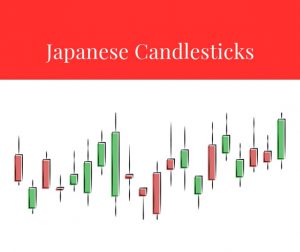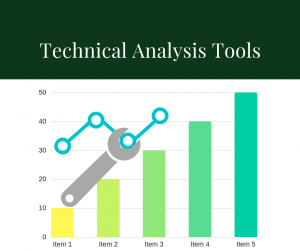Introduction
Forex trading is one of the most dynamic financial markets, attracting traders from around the world. One of the key features that make forex trading appealing is leverage—a tool that allows traders to control larger positions with a relatively small amount of capital. While leverage can amplify profits, it also increases risks, making it essential for traders to understand how it works before using it.
In this article, we will explore what leverage is, how it works in forex trading, its advantages, risks, and best practices for managing leverage effectively. Whether you are a beginner or an experienced trader, understanding leverage will help you make informed trading decisions.
What Is Leverage In Forex Trading?
Leverage is a financial tool that allows traders to control a larger position size with a relatively small investment. It is essentially borrowed capital that brokers provide to traders to increase their market exposure.
For example, if a broker offers a leverage ratio of 100:1, a trader can control a position worth $100,000 with just $1,000 in their trading account. This means the broker lends the remaining $99,000, allowing the trader to trade larger amounts than they could with their own capital alone. Leverage is commonly expressed as a ratio, such as:
- 10:1 (controls $10 for every $1 in capital)
- 50:1 (controls $50 for every $1 in capital)
- 100:1 (controls $100 for every $1 in capital)
- 500:1 (controls $500 for every $1 in capital)
While leverage increases profit potential, it also magnifies losses, which is why risk management is crucial.
How Leverage Works In Forex Trading?
When a trader uses leverage, they are essentially borrowing funds from the broker to increase their position size. The funds act as a loan that allows traders to take larger positions than they could afford on their own.
Example of Leverage in Action
Let’s say a trader has $1,000 in their trading account and their broker offers leverage of 100:1. This means they can trade up to $100,000 worth of currency.
If the trader buys 1 lot (100,000 units) of EUR/USD at an exchange rate of 1.1000 and the price rises to 1.1100, the trader makes a profit of $1,000 (a 100-pip gain, assuming a pip value of $10 per pip).
Without leverage, the trader could only buy 1,000 units ($1,000), and the same 100-pip gain would result in only a $10 profit.
Margin Requirement in Leverage
When traders use leverage, brokers require them to deposit a certain amount of money as margin. The margin is a security deposit that ensures traders can cover potential losses.
For example:
- A leverage of 100:1 requires a 1% margin (traders must deposit 1% of the total trade value).
- A leverage of 50:1 requires a 2% margin.
- A leverage of 20:1 requires a 5% margin.
If the trader’s losses approach their margin amount, the broker may issue a margin call, requiring them to deposit more funds to keep the trade open.
Advantages Of Using Leverage In Forex Trading
Leverage provides several benefits for forex traders, making it an attractive tool for increasing potential profits. Here are some of the main advantages:
Higher Profit Potential
Leverage allows traders to enter larger positions, which means even small price movements can result in significant profits. This is especially useful in the forex market, where price movements are usually small (measured in pips).
Increased Market Access
With leverage, traders can participate in the forex market with less capital, making it accessible to retail traders who may not have large amounts of money to invest.
Efficient Capital Utilization
Traders can use leverage to maximize returns on investment (ROI) without tying up all their capital in a single trade. This allows them to diversify and manage multiple trades simultaneously.
Flexibility in Trading Strategies
Leverage enables traders to implement various strategies, such as day trading, scalping, and swing trading, by taking advantage of short-term market movements.
Risks Of Leverage In Forex Trading
While leverage can amplify profits, it also significantly increases the risk of losses. If not used properly, leverage can wipe out a trading account quickly. Here are the key risks associated with leverage:
Increased Losses
Just as leverage amplifies gains, it also magnifies losses. A small unfavorable price movement can result in a large percentage loss of the trader’s capital.
Margin Calls and Stop-Outs
If a trade moves against the trader and their account balance falls below the required margin level, the broker will issue a margin call, requiring them to deposit more funds. If the trader cannot meet the margin requirement, the broker may close the trade automatically to prevent further losses.
Emotional Stress and Overtrading
The ability to trade large positions with small capital can lead to emotional decision-making and overtrading. Traders may take excessive risks, hoping for large profits, but end up making impulsive decisions that result in losses.
Market Volatility
The forex market is highly volatile, and unpredictable price movements can lead to rapid losses when using high leverage. A sharp price swing can trigger stop-loss orders or margin calls before traders have a chance to react.
How To Manage Leverage Effectively?
To minimize risks and use leverage wisely, traders should follow risk management strategies and discipline in their trading approach. Here are some key tips:
Use Lower Leverage Ratios
While high leverage may seem attractive, it is safer to use lower leverage ratios (e.g., 10:1 or 20:1) to reduce risk exposure. Many professional traders use leverage conservatively to protect their capital.
Implement Stop-Loss Orders
A stop-loss order automatically closes a trade if the price moves against the trader by a certain amount. This helps limit losses and prevents accounts from being wiped out.
Maintain Sufficient Margin Levels
Always keep an adequate balance in your trading account to avoid margin calls. Trading with excess margin can reduce the likelihood of forced liquidations.
Avoid Overleveraging
New traders should avoid using excessive leverage, as it increases risk disproportionately. Start with lower leverage and increase gradually as experience grows.
Trade with a Risk Management Plan
Successful traders always have a risk management plan in place, setting limits on how much capital they are willing to risk per trade (e.g., 1-2% per trade).
Conclusion
Leverage is a powerful tool in forex trading, allowing traders to amplify profits and access larger market positions. However, it also comes with significant risks, as losses can escalate quickly.
To use leverage effectively, traders should focus on risk management, discipline, and strategic decision-making. By understanding how leverage works and applying best practices, traders can maximize their opportunities while minimizing potential losses. Whether you are a beginner or an experienced trader, always approach leverage with caution and make informed decisions to succeed in the forex market.



